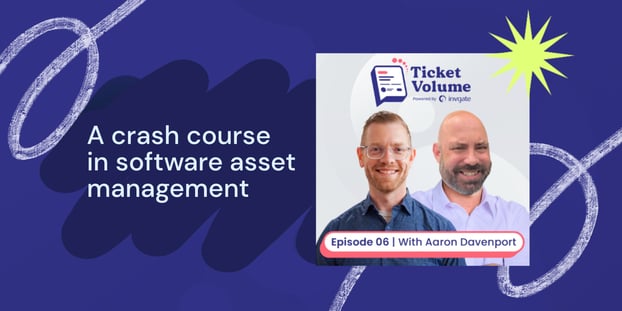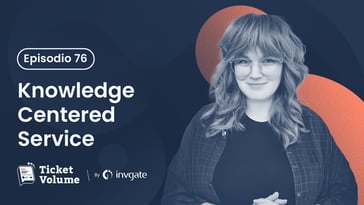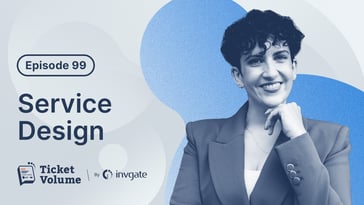Software Asset Management (SAM) is a topic that is seldom discussed in conversations about the importance of IT Asset Management. And yet it's a crucial part of every company's organizational efforts.
This is because software is more than just installations. software is the lifeblood of every company, and a Software Asset Management strategy empowers businesses to make better software licensing decisions to lower costs, as well as substantially mitigate risk from both an IT security and IT compliance standpoint.
But Software Asset Management isn't a one-size-fits-all proposition. What works for one company may be completely wrong for another, even when they're both aiming for the same thing. Every company's individual needs are different, and an effective Software Asset Management strategy should take that into consideration.
This topic is explored on the sixth episode of Ticket Volume, a podcast where InvGate Product Specialist Matt Beran speaks with IT leaders to explore their views on service management, technology, and business. In episode six, Matt speaks with Aaron Davenport, Software Asset Manager at HCA.
To build a robust, long-term software asset management strategy that's right for your company, start with the following steps.
- Determine your company's DNA. As mentioned, each company has different goals and needs. Take a prescriptive approach to SAM by figuring out what is going to work for you, and what will ensure that there's buy-in.
- Get your facts straight. Develop a clear inventory. You need a grasp of what you're buying and who is buying it. Having a clear view of your company's software ecosystem is important. This is going to be invaluable if you're ever facing a software audit.
- Realize what works across industries. While every company is unique, there are some underlying concepts that tend to hold true across various industries. Take the time to research what they are, and take what you can from them.
- Build your foundation on solid data that is trustworthy. You are only as good as your data, and it needs to be stored properly. A solid CMDB is more than a nice-to-have. It is essential.
- Networking is vital. Reach out to people. Communicating with individuals in your network will open your eyes to things you didn't know were happening, or properly contextualize others.
On this topic, Aaron says:
Reach out to people in your social networks and saying "hey, I'm seeing this in my organization." and you don't have to give specifics. "Here's a theme I'm seeing." And you'll be amazed at the responses you get out of that form people that have been through a similar, if not the same exact situation you've been through. And I find that as, if not more, valuable than the certifications, because the certifications are like a lab environment. Everything's going to go the exact same way every time in the certification, the answer is either yes or no. Software asset management is a grey area. So that takes experience in navigation to work out. It's not just "the answer is always yes or the answer is always no." The answer is most times "maybe," and then how do you navigate that?
Aaron Davenport is a Software Asset Management specialist, process owner, and organizational change expert. He also has an MBA in IT Business Administration. He's currently a senior consultant specializing in license optimization, and he's worked with companies such as Microsoft, IBM, Flexera Software, Oracle, ServiceNow, and Adobe.

You can play the full episode above to learn more. You can also find Ticket Volume on all podcast platforms.















